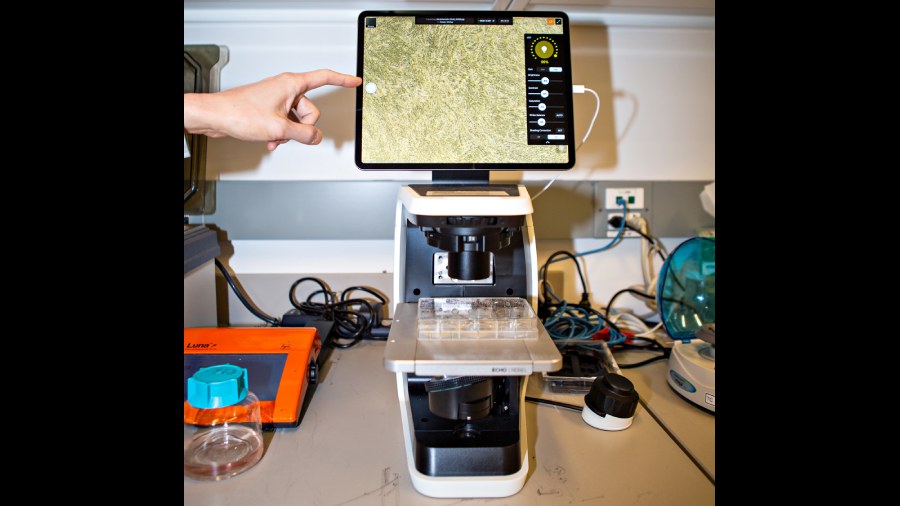Ten years ago this week, Jennifer Doudna and her colleagues published the results of a test-tube experiment on bacterial genes. When the study came out in the journal Science on June 28, 2012, it did not make headline news.
Looking back, Doudna wondered if the oversight had something to do with the wonky title she and her colleagues had chosen for the study — A Programmable Dual RNA-Guided DNA Endonuclease in Adaptive Bacterial Immunity.
“I suppose if I were writing the paper today, I would have chosen a different title,” Doudna, a biochemist at the University of California, Berkeley, US, said in an interview.
Far from an esoteric finding, the discovery pointed to a new method for editing DNA, one that might even make it possible to change human genes.
“I remember thinking very clearly, when we published this paper, it’s like firing the starting gun at a race,” Doudna said.
In just a decade, CRISPR has become one of the most celebrated inventions in modern biology. It is swiftly changing how medical researchers study diseases: cancer biologists are using the method to discover hidden vulnerabilities of tumour cells. Doctors are using CRISPR to edit genes that cause hereditary diseases.
“The era of human gene editing isn’t coming,” said David Liu, a biologist at Harvard University, US. “It’s here.”
But CRISPR’s influence extends far beyond medicine. Evolutionary biologists are using the technology to study Neanderthal brains and to investigate how our ape ancestors lost their tails. Plant biologists have edited seeds to produce crops with new vitamins or with the ability to withstand diseases. Some of them may reach supermarket shelves in the next few years.
CRISPR has had such a quick impact that Doudna and her collaborator, Emmanuelle Charpentier of the Max Planck Unit for the Science of Pathogens in Berlin, Germany, won the 2020 Nobel Prize for chemistry. The award committee hailed their 2012 study as “an epoch-making experiment”.

Jennifer Doudna
The most profound ethical question about CRISPR is how future generations might use the technology to alter human embryos. This notion was simply a thought experiment until 2018, when He Jiankui, a biophysicist in China, edited a gene in human embryos to confer resistance to HIV. Three of the modified embryos were implanted in women in the Chinese city of Shenzen.
In 2019, a court sentenced him to prison for “illegal medical practices”. MIT Technology Review reported in April that he had recently been released. Little is known about the health of the three children, who are now toddlers.
Doudna and Charpentier did not invent their gene-editing method from scratch. They borrowed their molecular tools from bacteria.
In the 1980s, microbiologists discovered puzzling stretches of DNA in bacteria, later called Clustered Regularly Interspaced Short Palindromic Repeats, or CRISPR. Further research revealed that bacteria used these CRISPR sequences as weapons against invading viruses.
The bacteria turned these sequences into genetic material, called RNA, that could stick precisely to a short stretch of an invading virus’s genes. These RNA molecules carry proteins with them that act like molecular scissors, slicing the viral genes and halting the infection.
As Doudna and Charpentier investigated CRISPR, they realised that the system might allow them to cut a sequence of DNA of their own choosing. All they needed to do was make a matching piece of RNA.
To test this revolutionary idea, they created a batch of identical pieces of DNA. They then crafted another batch of RNA molecules, programming all of them to home in on the same spot on the DNA. Finally, they mixed the DNA, the RNA and molecular scissors together in test tubes. They discovered that many of the DNA molecules had been cut at precisely the right spot.
For months, Doudna oversaw a series of round-the-clock experiments to see if CRISPR might work not only in a test tube but in living cells. She pushed her team hard, suspecting that many other scientists were also on the chase. That hunch soon proved correct.
In January 2013, five teams of scientists published studies in which they successfully used CRISPR in living animal or human cells. Doudna did not win that race; the first two published papers came from two labs in Cambridge, Massachusetts, US.
Lukas Dow, a cancer biologist at Weill Cornell Medicine, US, vividly remembers learning about CRISPR’s potential. “Reading the papers, it looked amazing,” he recalled.
Dow and his colleagues soon found that the method reliably snipped out pieces of DNA in human cancer cells.
“It became a verb to drop,” Dow said. “A lot of people would say, ‘Did you CRISPR that?’”
Cancer biologists began systematically altering every gene in cancer cells to see which ones mattered to the disease. Researchers at KSQ Therapeutics, also in Cambridge, used CRISPR to discover a gene that is essential for the growth of certain tumours, for example, and last year, they began a clinical trial of a drug that blocks the gene.
Caribou Biosciences, co-founded by Doudna, and CRISPR Therapeutics, co-founded by Charpentier, are both running clinical trials for CRISPR treatments that fight cancer in another way: by editing immune cells to more aggressively attack tumors.
Those companies and several others are also using CRISPR to try to reverse hereditary diseases.
NYTNS










